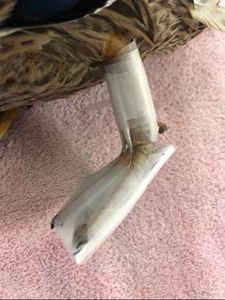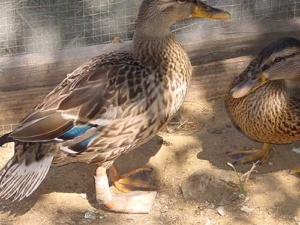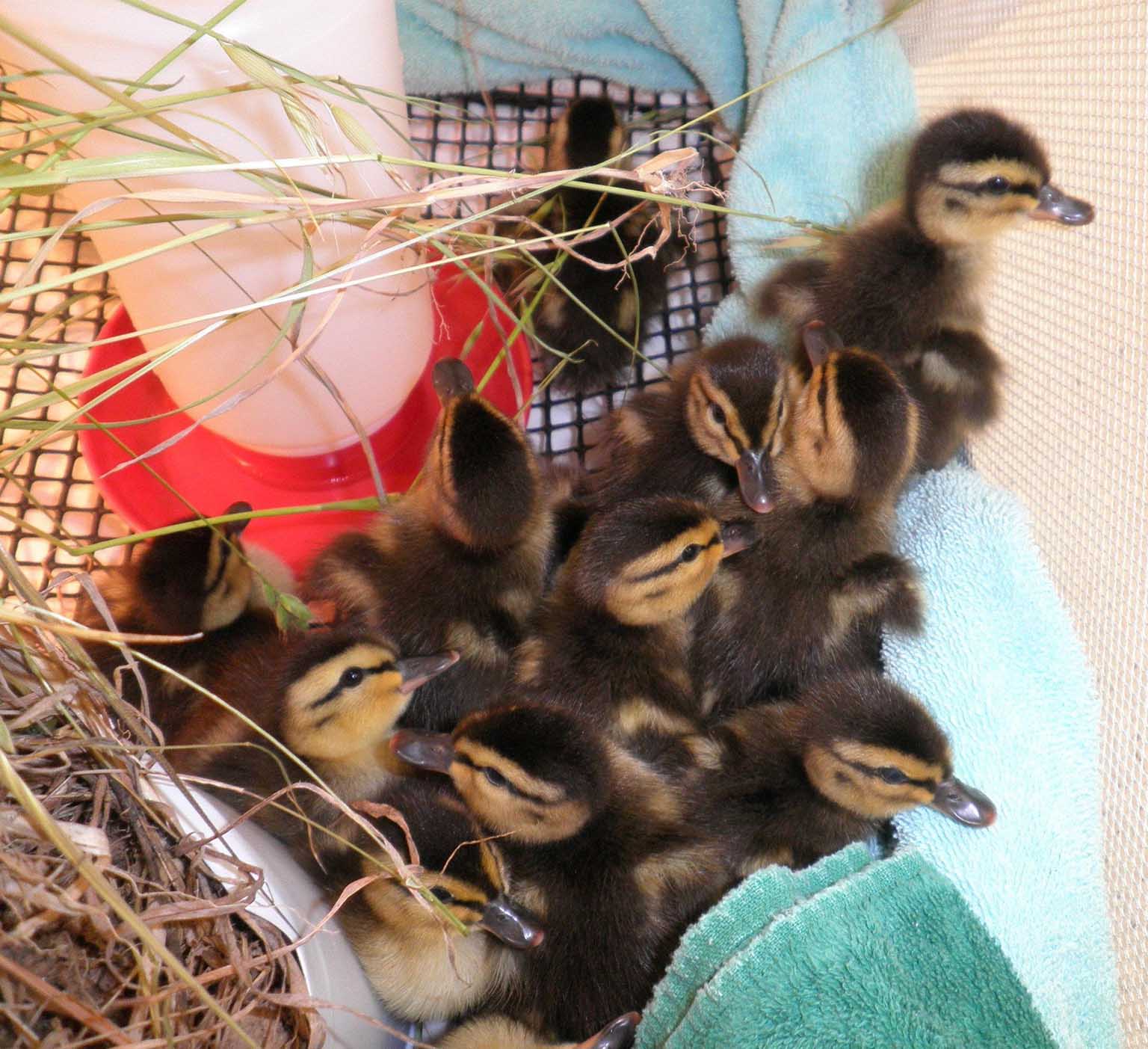Giving a Duck the Boot
By: Dr. Guthrum Purdin, Veterinarian
The animals who are brought to wildlife rehabilitation centers represent a myriad of species, each having unique biological and behavioral needs. Successfully treating an animal who may have been dying when they arrived requires a deep understanding of what that particular individual needs, and how their condition is affected by species-specific variables. Very little medical research has been done on treating wildlife, so rehabilitators need to make themselves keen observers and experts on the animals they handle. Often, new therapies and treatment strategies are created by individuals working in the terra incognita of wild animal care.
Many years ago, when my wife and I were finishing our undergraduate classes prior to attending veterinary school, we were co-directors of animal care here at the California Wildlife Center, just a few years after it first opened. I remember one case from this period that needed us to be especially creative in order to help a female Mallard who arrived in dire condition.

Duck boot – photo credit by Dr. Rebecca Duerr
The Mallard had been seen by a regular dog & cat veterinary office for an injured leg before transfer to CWC. That vet had put a splint on the leg that would have been fine for a dog, but the duck was having a lot of trouble. On arrival, she was tumbling over & over as she tried to stand, failed, fell over, and panicked again and again. We removed the leg wrap and found a bone called the tarsometatarsus (TMT) was broken very close to the foot. This bone is below the hock (the hock is the joint equivalent to a human ankle but looks like a backward facing knee when ducks are waddling around). It’s normal for mammals to include the joints above and below a bone fracture into a splint to stabilize the break. However, with most birds, such wraps make normal walking impossible and wild animals quickly start to panic. Plus, birds will heal fractures quicker, with less risk to surrounding joints, if they can use the leg normally. For a broken TMT, we usually apply stiff padded splints to one or two sides of the bone. This can be enough for a hawk or a songbird. For this duck, it was not enough— she was folding the foot under the leg, standing with her foot upside down. We had to put our thinking caps on for this one! The solution we came up with was to make a “shoe” of stiff material (like the firm closed-cell foam used in certain food packaging) cut in the shape of the foot, padded, and taped on, plus we cut metal paperclips, bending them to match the angle of the TMT where it meets the foot, wrapped them in padding, and taped the whole rig in place. Voila! The first “duck boot” was made. The female Mallard could now put her weight comfortably on the leg, walking easily and confidently—without panicking.

Duck boot splint – photo credit by Dr. Guthrum Purdin
But wait! I didn’t mention she had ducklings with her. A broken leg like hers usually means the bird is “dry docked” for a while, kept out of water so the splint and wrap can stay dry. But with her babies in tow, she would need to be able to get into and out of a shallow pool of water. The answer was using a kind of plastic tape that maintained its stickiness in the water, giving her a waterproof boot. With a good diet, medication for pain and inflammation, plus a quiet, peaceful enclosure to heal in, this Mallard was able to resolve the fracture, take care of her ducklings, and they were all released together back into the wild.
Since then, we’ve used this splint dozens of times, taught its use at rehabilitation conferences and veterinary schools, and it has been included in a couple textbooks. This is not a unique story. Wildlife rehabilitators, from highly trained veterinarians to deeply committed volunteers with no formal education, have come up with many of the crucial treatment modalities used around the world for countless injured, sick, and orphaned wild animals who, without their caregiver’s dedication and determination, would not have survived. These techniques are shared and refined amidst the rehabilitation community and will benefit distressed wild animals for generations to come. Every time I go to a conference, open a journal, or sit down to dinner with a colleague, I never know what new ideas and innovations will be revealed!

Ducklings – photo credit by Dr. Guthrum Purdin
